Fenugreek is not used very often in Western recipes, hence it can be scarce on supermarket shelves. Fret not, there are fenugreek substitutes you can use.

A beautifully fragrant spice with a unique taste, fenugreek is an important ingredient in many different cuisines, particularly Indian and Asian. The thing is, it’s not the easiest ingredient to get hold of.
Let’s find out more about this wonderful spice and discover the best fenugreek substitutes to use when you’re caught short, spicewise.

What is fenugreek?
Fenugreek, or trigonella foenum-graecum (trying saying that after a couple of glasses) is a plant native to Asia and the Mediterranean.
It’s been used as a health ingredient for thousands of years in Chinese, Greek and Egyptian medicine, to treat skin conditions, ease childbirth and combat diseases.
Also known as ‘Greek hay,’ Fenugreek can also lower blood pressure, ease digestion and act as an aphrodisiac. What’s not to like?
While its health benefits make it a super spice, it’s the taste and aroma that make fenugreek a popular cooking ingredient.
Fenugreek seeds are the most widely used part – they are normally toasted and ground before being added to curries and sauces or used with other spices as part of a meat rub.
In India fenugreek seeds are also used as a coffee substitute or as a tea infusion. Ground fenugreek is a key ingredient in garam masala and other types of curry powder. It’s also a part of the five-spice known as ‘panch puran’ and is widely used in chutneys.
Fenugreek leaves, or methi, are also a popular cooking ingredient. They can be finely chopped and used as a herb to bring some subtle flavor to curries, stews, soups and casseroles.
What does fenugreek taste like?
Fenugreek has a taste like no other, which makes finding a good fenugreek substitute a little tricky.
Think of that ‘earthiness’ that characterises celery. Add a little bitterness and a touch of nuttiness. Then, here comes the interesting bit, a subtle woody sweetness akin to maple syrup.
The similarity to maple syrup may seem a bit weird, but they actually share a chemical compound known as 'sotolone'. Sotolone has a deep caramel scent and can also be found in molasses, aged rum, white wine and Japanese sake.
So, we’re going to keep this in mind when looking for the ideal fenugreek substitute.
The best fenugreek substitute
8 Fenugreek substitutes
Fenugreek is not used very often in Western recipes, hence it can be scarce on supermarket shelves. Keep on reading to find out the best fenugreek substitutes!
To best replicate the specific taste profile of fenugreek, you’ll need a blend of three ingredients. First, yellow mustard seeds have quite a mild earthy flavor, much like fenugreek, so they can cover that aspect of the flavor of fenugreek seed.
Another ingredient that gets close to the slightly bitter character of fenugreek seed, this time with a herbal quality, are celery seeds.
Finally, to bring that woody, nutty sweetness that characterizes fenugreek, maple syrup is perfect. As fenugreek and maple syrup both have sotolone – the caramel scented compound that brings that sweetness – it’s a good swap.
To get the right balance, use ⅔ teaspoon of ground mustard seeds, ⅓ teaspoon of celery salt and ½ teaspoon of maple syrup in place of 1 teaspoon of mustard seeds.
If blending a variety of ingredients for the ideal fenugreek substitute isn’t an option, yellow mustard seed is the best like-for-like swap. A mild, bitter-sweet flavor with a touch of spice and a hint of earthiness makes them a good alternative. Swap in for fenugreek at a ratio of 1:1.
Packing more of a punch than their yellow counterpart, brown mustard seeds can also be used as a fenugreek substitute. Be warned, they will add plenty more heat and bring more of that typical ‘mustardy’ taste then the yellow variety.
Replace fenugreek with like-for-like measures, but be wary of overpowering the taste of your dish.
If you’re cooking a curry that calls for fenugreek, garam masala powder could be a great alternative. Garam masala is usually made up of anything from turmeric, saffron, fennel seeds, ginger and garlic to mustard seeds, star anise, tamarind and fenugreek.
So, use one teaspoon of garam masala powder to every teaspoon of fenugreek – just be sure to adjust your recipe, such as leaving out fresh garlic or ginger, based on the extra ingredients you’re bringing with the masala.
Also, for a touch of sweetness, add ½ a teaspoon of maple syrup of brown sugar.
Curry powder is a blend of different spices that normally include cumin, garlic, ginger, pepper, mild chilli, coriander and sometimes fenugreek. As a fenugreek substitute in curries, curry powder can work well, covering the slightly sweet, spicy bitterness, although it doesn’t fully replicate the taste.
Swap one flat teaspoon of curry powder for one heaped teaspoon of fenugreek seeds.
With their slightly sweet herbal taste, fennel seeds can bring some of the flavor of fenugreek and act as a decent replacement for fenugreek seeds in hearty dishes that call for a bit of spice. Still, fennel seeds have an altogether different flavor, with a particular aniseed taste than can easily overpower a dish if not used in moderation.
Blending fennel seeds with yellow mustard seeds works well as a substitute for fenugreek. This is because the mustard seeds cut through the fennel flavor, balancing out the sweetness and bringing an earthiness.
When replacing fenugreek, use ½ teaspoon of fennel seeds and ½ teaspoon of mustard seeds for one teaspoon of fenugreek seeds.
Celery seeds are a great flavor enhancer and can work well as a substitute for fenugreek. They are best used in combination with other ingredients – see ‘The best fenugreek substitute’ above – but are a decent alternative as a straight swap too.
The herbal, earthy, slightly bitter flavor of fenugreek is hard to replicate, but celery seeds will certainly come close. Add a teaspoon of celery seeds for every teaspoon of fenugreek seeds and add an extra touch of sweetness to your dish with ½ teaspoon of maple syrup or brown sugar.
If you’re looking for an ingredient with an earthy taste that can stand up to the incredible healthy benefits of fenugreek, maca powder could be for you. Commonly used in Peruvian cuisine, maca has a distinct earthy, nutty, bitter taste that you’ll either love or hate.
On the plus side, maca powder has been proven to boost libido, increase fertility, improve male virility, increase energy and endurance, reduce blood pressure and reduce symptoms of menopause. So, while the taste isn’t spot on, maca powder has a similar super spice status.
Swap one flat teaspoon of maca powder for one heaped teaspoon of fenugreek seeds.
Would you like to save this?
Amazing recipes that use fenugreek
If you’re keen to sample this heaven-scented, fabulously flavored spice, here are some great fenugreek recipes for you try your hand at:
- Curry base sauce – the secret sauce that forms the base of so many incredible curries, learn to cook this and you’ll be ready to whip up an authentic curry in no time
- Mung bean curry – a curry that’s full of flavor, packed with nutrients and perfect for meat eaters and vegans alike, mung bean curry is a hearty, warming curry with a fantastic selection of spices, fenugreek among them
- Achar gosht – a spicy, pickled mutton curry from Pakistan, achar gosht is rich, hearty and spicy. Tender beef, onion, fenugreek, fennel and garlic combine for a mouth watering treat!
- Malai paneer – the renowned Indian cheese paneer works so well with this rich creamy recipe that also features almonds, turmeric, coriander, our favorite fenugreek and chilli
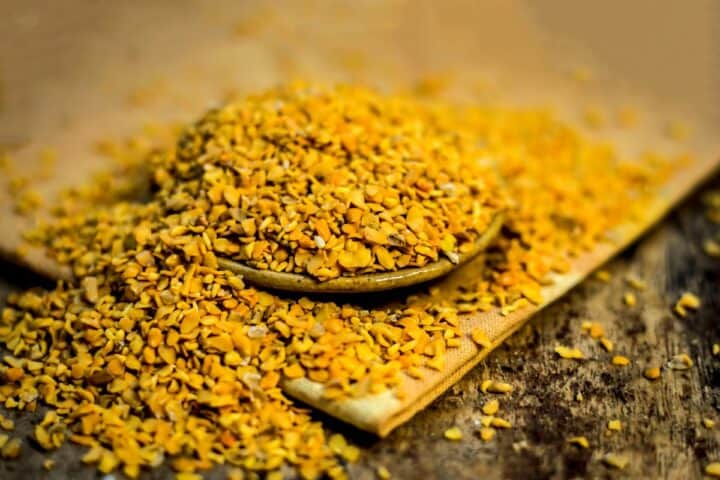
More substitute guides
Do you often find yourself short of a vital ingredient? Check out some of my other handy substitute guides and get clued up on how to replicate the flavors of some of your favorite ingredients:

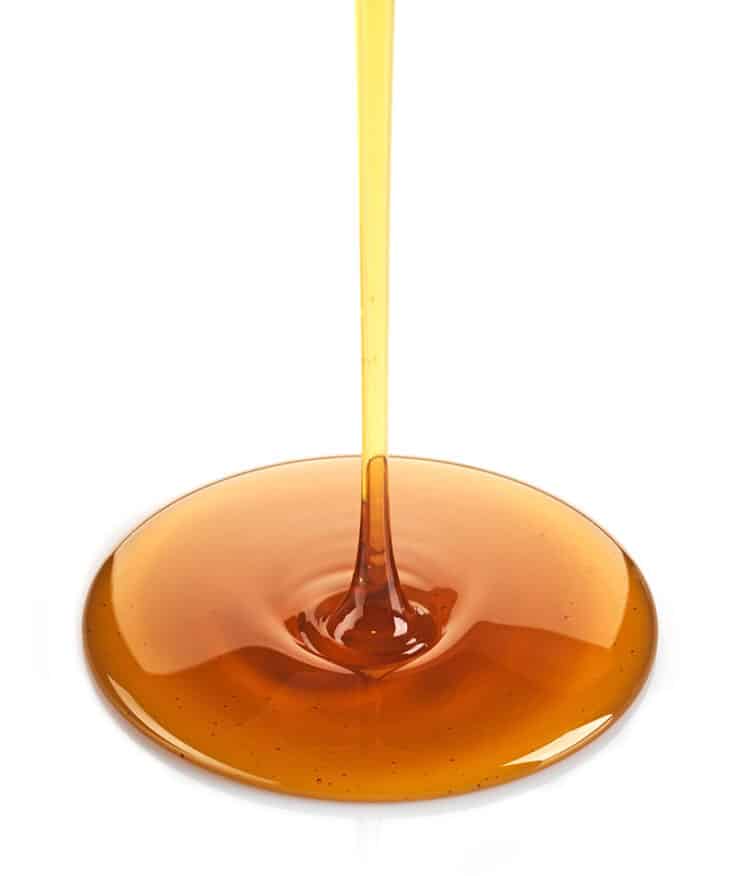


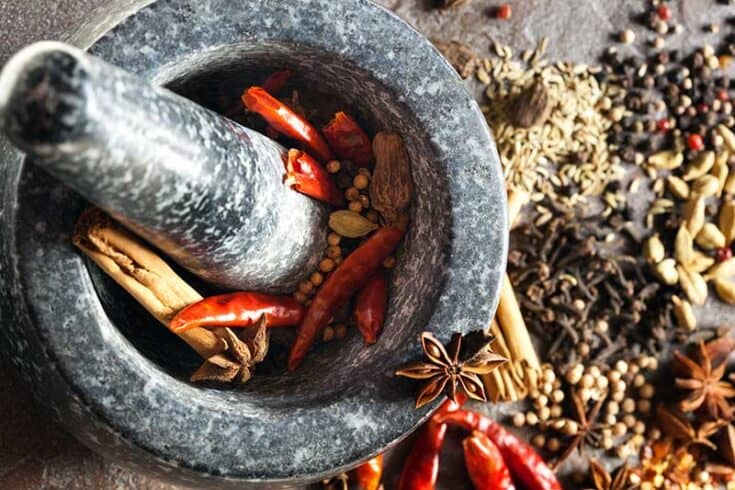




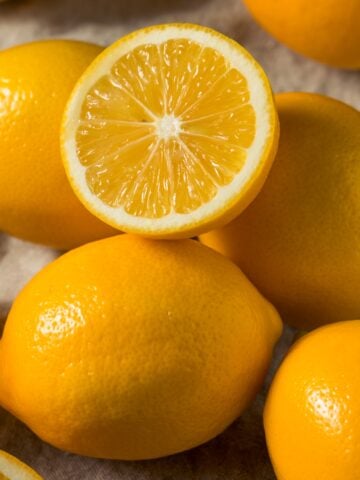
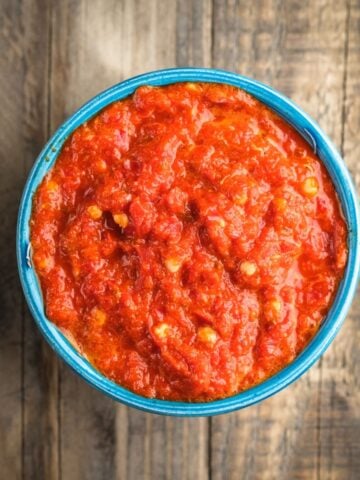


Make my day! - Share your thoughts...